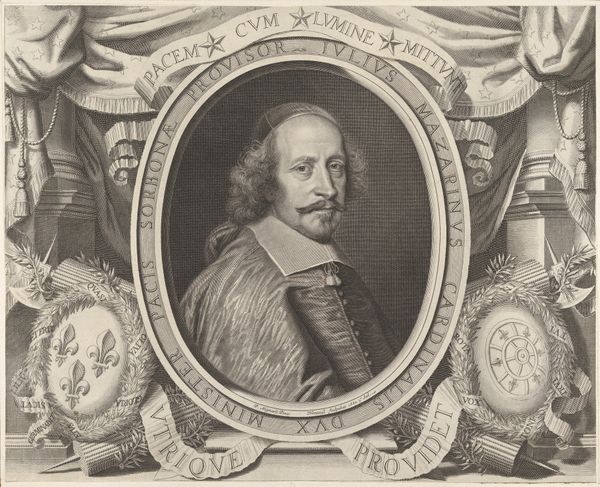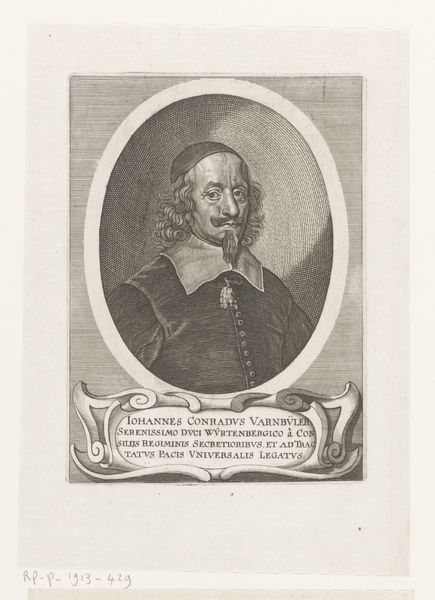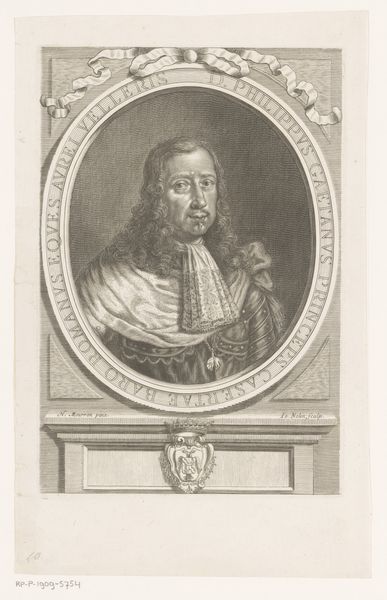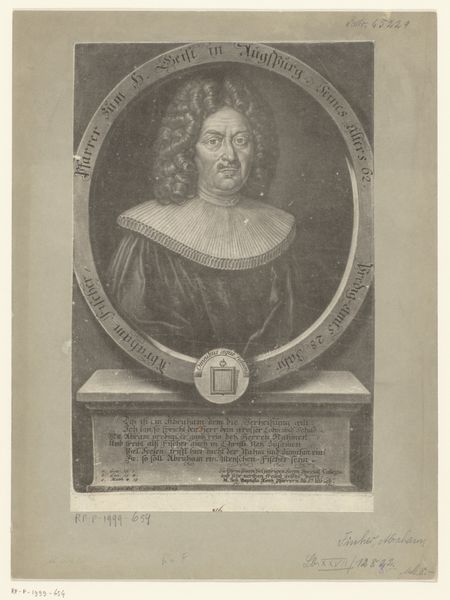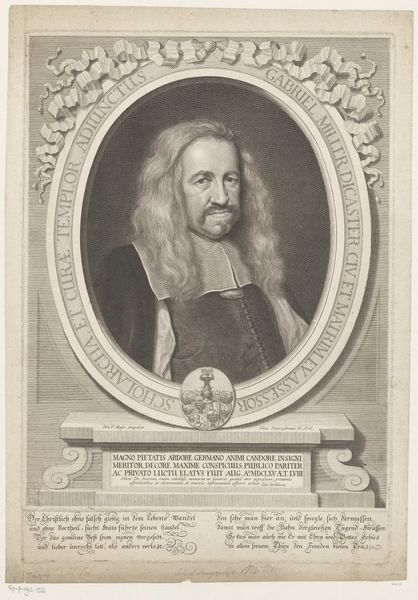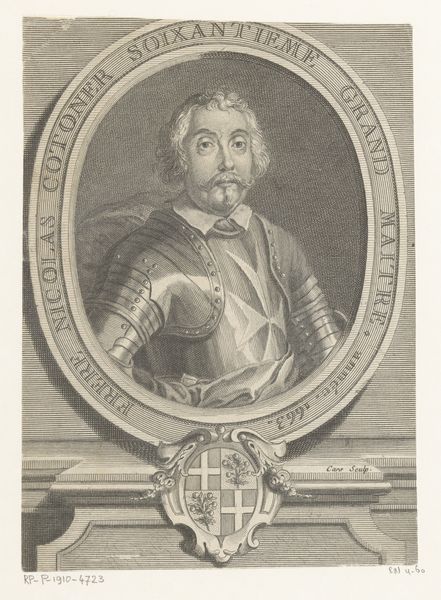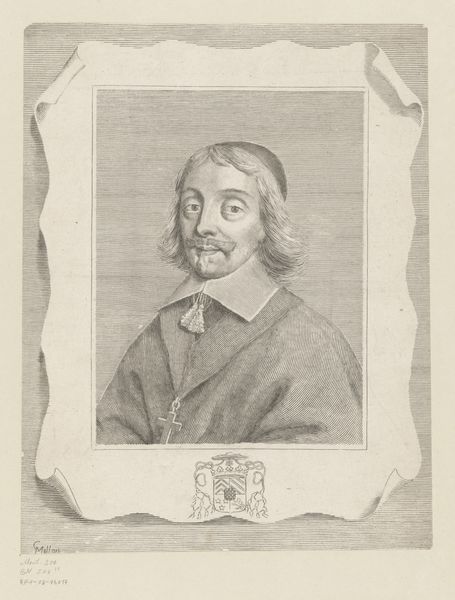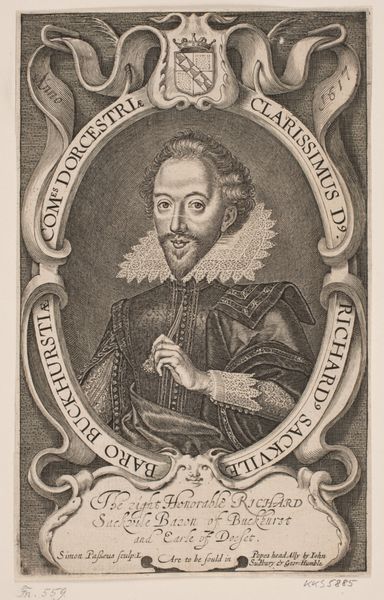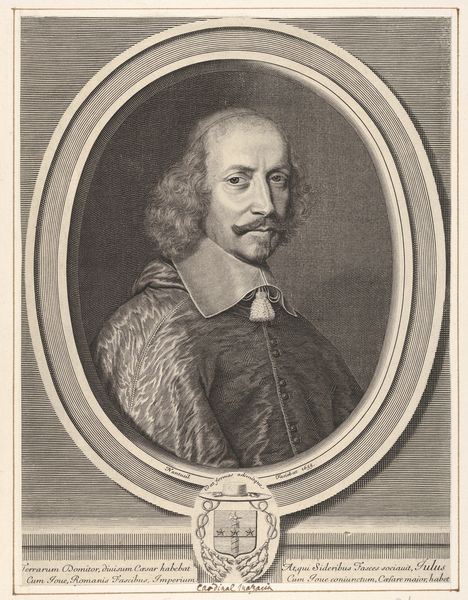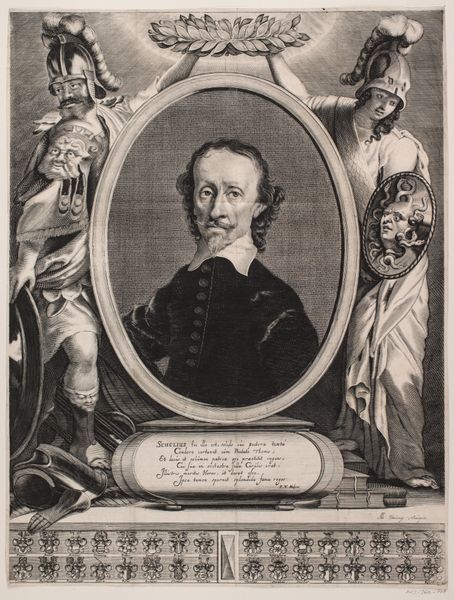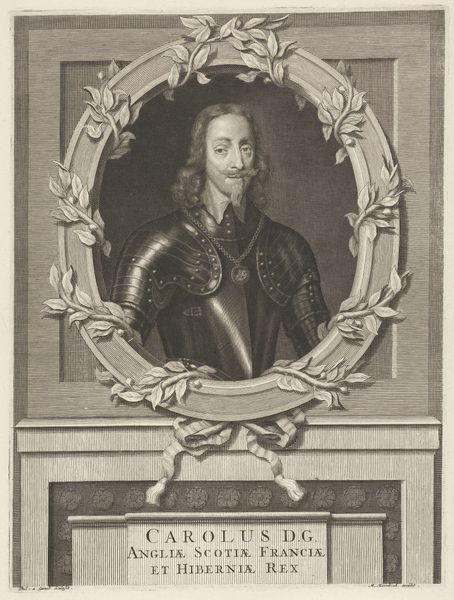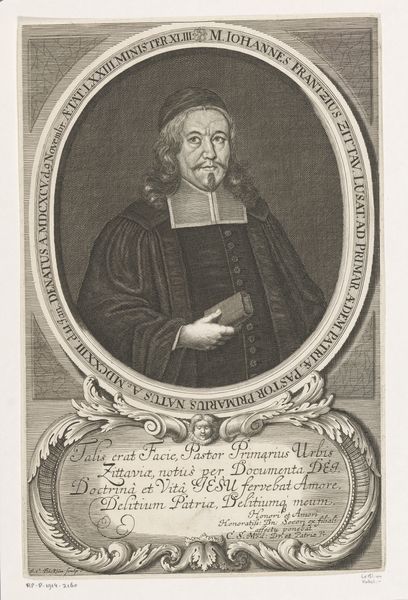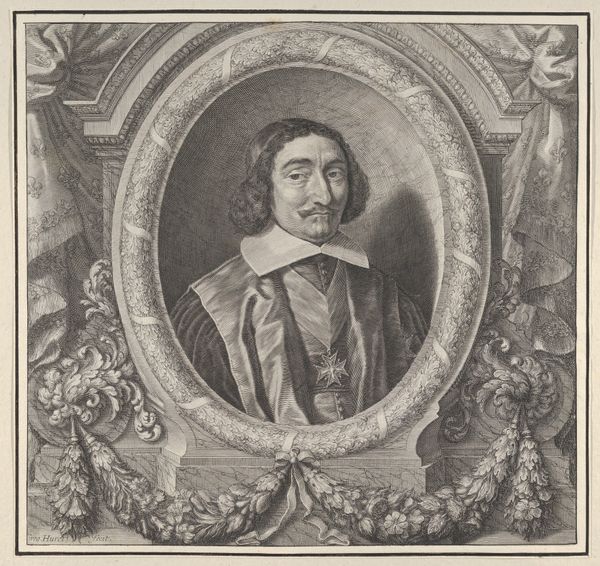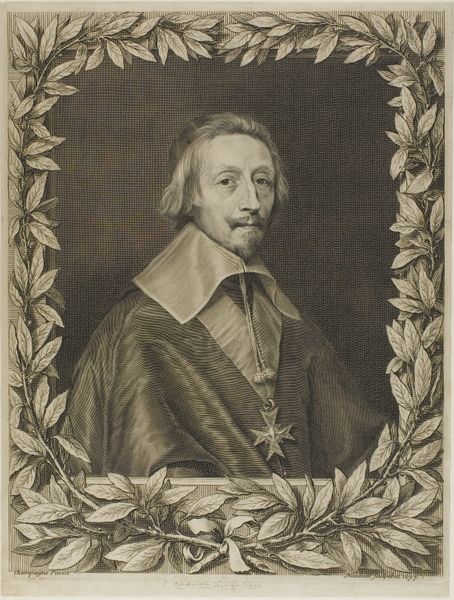
print, metal, engraving
#
portrait
#
baroque
# print
#
metal
#
old engraving style
#
caricature
#
engraving
Dimensions: height 255 mm, width 301 mm
Copyright: Rijks Museum: Open Domain
Curator: Look at this portrait of Jean-François Paul de Gondi. It's an engraving by Michel Lasne, dating roughly from the 17th century. Notice the precision of the lines? Editor: Immediately, I'm drawn to the rather theatrical composition! It has such a baroque feel. Like he’s presenting himself on a stage framed by these rather… muscular angels. What do you make of them? Curator: I'm curious about the metal plate Lasne used for the printmaking process itself, and how it determined the range of tonal values. Think about the workshops of the time and how printmaking facilitated the wider circulation of images, fashioning a very particular image of status for people like de Gondi. Editor: That's interesting, I hadn't thought about that, but it is more than just a picture isn't it. Almost mass-produced for its time. Speaking of, his stern, almost mocking gaze, suggests a man aware of his power. What statement do you think the artist was aiming to capture for de Gondi? Curator: Absolutely, prints like these democratized representation, to an extent, by making images accessible to a broader audience, if they could afford a print like this that is. And I believe Lasne was aiming for a level of realistic depiction and perhaps flattery given de Gondi's prominent role. Editor: Right, because there's definitely a touch of caricature here, almost an exaggerated portrayal, playing on his features…perhaps even poking a bit of fun? This seems quite daring, in a sense. Curator: The inscriptions around the frame would also give a specific dimension to the statement being crafted through this piece. And it had to be approved beforehand so perhaps the person saw value or an angle in portraying him in a light manner. Editor: It's a layered piece, truly. What initially seemed like a straightforward portrait opens up into a commentary on representation, production, and…dare I say, a hint of subversion. Curator: Exactly. Looking closer at the material details transforms how we consider not only who this portrait represents but how and why such images circulated in the 17th century. Editor: It shifts from a portrait to a piece of social commentary. That gives me goosebumps.
Comments
No comments
Be the first to comment and join the conversation on the ultimate creative platform.
